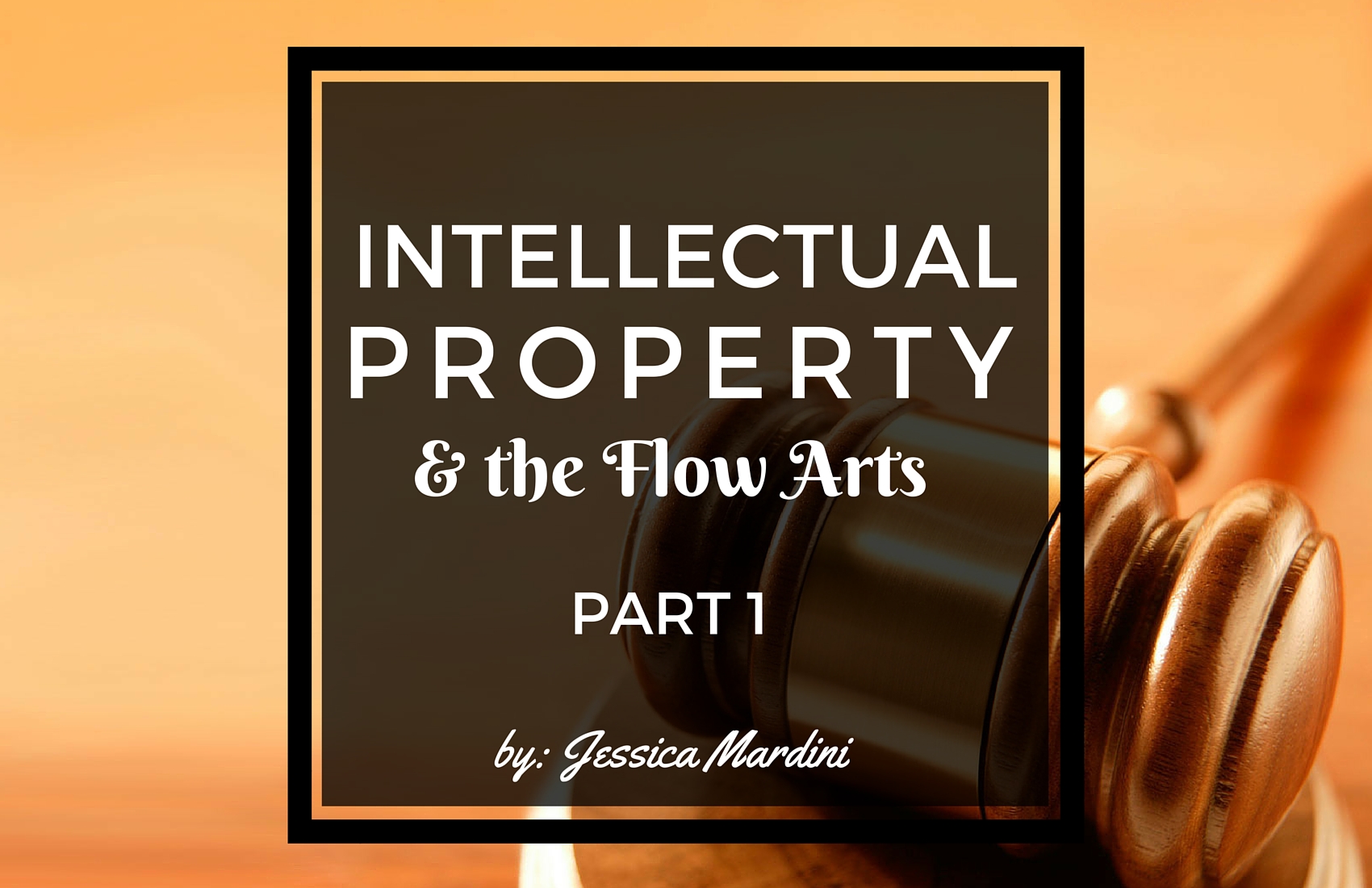There are five basic types of Intellectual Property (IP). This article will examine the three most widely used: Patent, Copyright, and Trademark (the other two are Trade Secrets and Rights of Publicity). A big thanks to Doodle, who has graciously given me permission to use him as an example to make these concepts more accessible to understand in terms of flow arts.
The legal system in the United States has recognized property rights since its inception. The Founding Fathers judged property rights to be so important that they included them in the first ten amendments in the Bill of Rights (5th Amendment; Protection of Rights to Life, Liberty, and Property). The government provided these rights in an effort to protect their citizen’s investments, whether they be tangible property, such as land, or intangible property, such as a spoken poem. Protection for patent and copyright stems from Article I, Section 8 of the Constitution, and protection for trademark is found in the Commerce Clause. Patents and trademarks are governed by the United States Patent and Trademark Office (USPTO) and copyrights are governed by the United States Copyright Office, a department of the Library of Congress.
Keep in mind though, that IP use dates back much further than the creation of the United States. Patent and copyright recognition came into regular use in Europe in the 1400’s thanks to the invention of the printing press. While trademark wasn’t officially recognized until around that same time, the use of identifying marks for goods has been used consistently dating as far back as B.C.E. years (think: pottery markings, silversmith markings, etc.).
Now that we have some background on IP, let’s tackle what exactly “Intellectual Property” is, and why we use it. “Intellectual Property refers to creations of the mind, such as inventions; literary and artistic works; designs; and symbols, names and images used in commerce.” -World Intellectual Property Organization Commerce simply means the buying and selling of goods or services. IP laws grant individuals the right to protect and benefit from their investment in their creations, just like land property rights allow individuals to protect and benefit from their investment in real estate.
We choose to protect IP rights in order to:
1. Encourage the creation of new ideas and works in technology and culture;
2. Encourage and sustain the investment of resources toward new invention; and
3. Encourage and sustain economic growth and quality of life through innovation and job creation.
IP finds the middle point between protecting the creator’s ideas, and ensuring that the public good is promoted so that society can continually improve its social, cultural, and economic health as found by the WIPO.
The following chart breaks down what each type of IP is, what it covers and why we need it, followed by generic and flow arts specific examples of each.
|
Type of IP |
Patent |
Copyright |
Trademark |
|
What may be protected by a legal right in IP |
A product with a new functional feature (utility patent) or aesthetic design (design patent) |
An original work of authorship, fixed in a tangible medium of expression |
A word, symbol, design, color, or smell, or other element or combination of elements used to identify the source of the goods or services and distinguish them from those of another |
|
What it Covers |
Ideas (Inventions) |
Creative Expression, aka protection for how you EXPRESSED that idea (Art, Text, Photos, Music, Architecture) |
Product and Services Identifiers (Word Marks, Design Marks, Color Marks, Sign Marks, Slogans) |
|
Why do we need it? |
1. To protect a creator’s investment in innovation while still promoting the public welfare 2. To encourage economic growth by protecting and rewarding a creator’s new innovation. |
1. To encourage and sustain originality by promoting and rewarding works of creative expression 2. To promote cultural and social growth by encouraging originality 3. To encourage the circulation of creative works |
1. To protect the consumer from likelihood of confusion with other similar products 2. To protect the investment of the trademark owner 3. To promote fair competition in the marketplace |
|
Example |
1. Music Equipment (The Gibson “Electraharp”) 2. Sports Equipment (The “Louisville Slugger”) 3. Business Methods (Netflix’s method of transmitting media) |
1. Drawing (The Mona Lisa) 2. Instruction manual (How to Play UNO) 3. Music (Abbey Road) 4. Video (The Lion King) |
1. Company catchphrase (Disney World: “The Happiest Place on Earth”®) 2. Logo (The Adidas Flower) 3. Business Name (Google®) 3. Business Symbol (The Blue and White IBM text) |
|
Flow Arts Example |
Doodlegrip™ practice fans |
Doodlebytes |
Doodlegrip™ (the phrase) and the image of the fan |
Look out for the next article that will address how the government determines what is protectable under each category, what rights are legally conferred to the owner of IP, and how they may utilize those rights.

